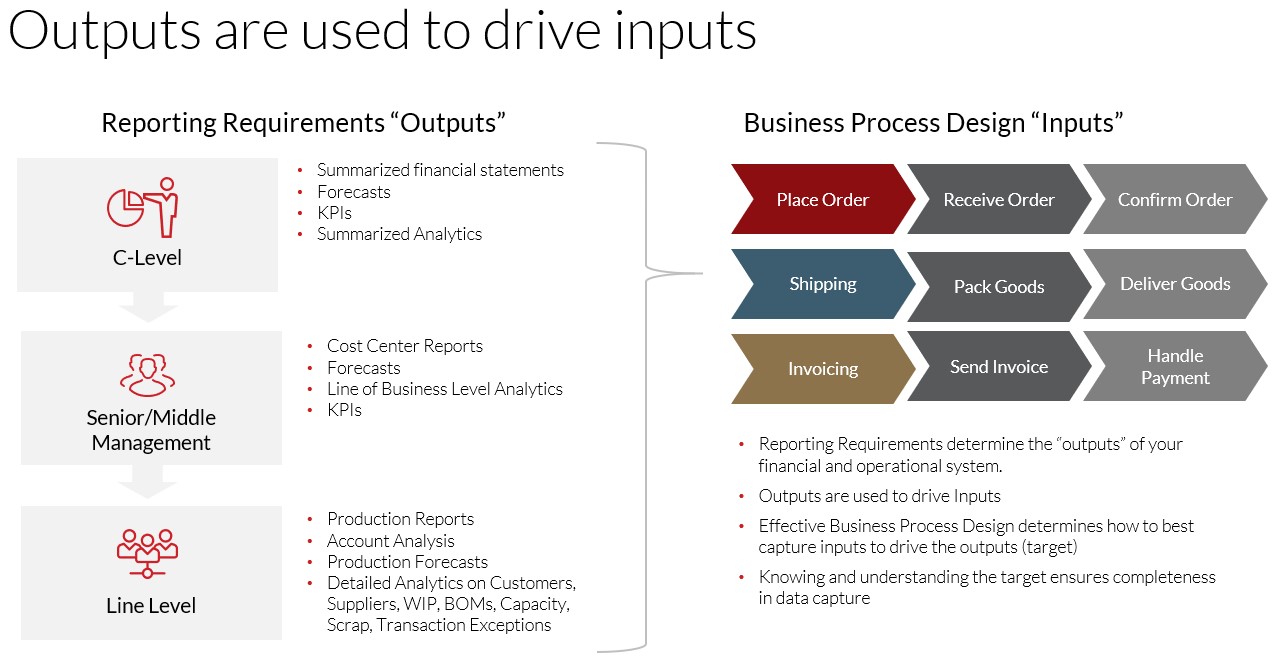ERP Essentials – Business Process Design, Optimization, Reporting Requirements
Know Your Audience
If you think about the make up of your company, in terms of personnel and the roles they play, no matter what level someone sits at, CEO, Line Manager, down to Assembler, you can describe that person as a creator of data or a consumer of data, and in many cases perhaps both.
It’s important to understand the needs of the data consumers either before trekking down an ERP implementation or certainly no later than the first stage. From the top of the organization − CEO straight down to all levels of management − you’ve got to understand the decisions they make and what data they need to make those decisions. The CEO, COO, CFO, CIO… basically the needs of the top .01% of your company will drive how everything works from that point down.
Identify Reporting Needs Early and from the Top Down
Guide to Oracle Cloud: 5 Steps to Ensure a Successful Move to the Cloud
Explore key considerations, integrating the cloud with legacy applications and challenges of current cloud implementations.
After many years of working and managing large ERP projects, there is no doubt that this effort should be performed upfront and from the top down. Why? Because each level of reporting from the top will drive the next level of reporting, the next level, the next, etc. Down to the point where the line manager can tell the VP Operations and VP of Finance the number of units produced, the defect rate, the % of scrap, etc. which in turn allows those VPs to make decisions about efficiencies on the line, how to manage cost variances, make projections on profitability and update standard costs. In turn, their managers can make plant capacity decisions, engineering considerations, and quality control recommendations.
If the lowest level line manager understands what the needs are of management, they will be able to articulate their data requirements, which in turn will drive what data is captured in the system, when it is captured and drive that data directly to the consumers that need it in real-time.

Make No Assumptions That “what you are doing today” is “Best.”
Should you replicate what you are doing today in your ERP upgrade or move to the cloud? Many of your reporting requirements are simply because “we’ve been doing it that way for 20 years,”… and consumers of data are now struggling to get what they need, in many cases, relying on inputs into manual spreadsheets. If you’re still doing this after the ERP implementation, suffice to say you did not get the maximum bang for your buck.
Allow yourselves the time, effort, and budget to understand your organization’s reporting needs upfront before you define your new business process. Each reporting requirement can then be mapped into business processes. The project team can ensure the organization’s data and reporting requirements are met before the design is finalized.
Consider the effort you are embarking on will last a full generation before it is done again, if ever also. Engage all management levels early, keep them on your radar, provide samples of reporting along the journey and ensure you are all in lockstep agreement.
If you upgrade your Oracle EBS or move into ERP Cloud, Perficient is here to enable your organizational success. Reach out to Perficient today to hear more about our approach, methodology, capabilities, and speak to our references.

